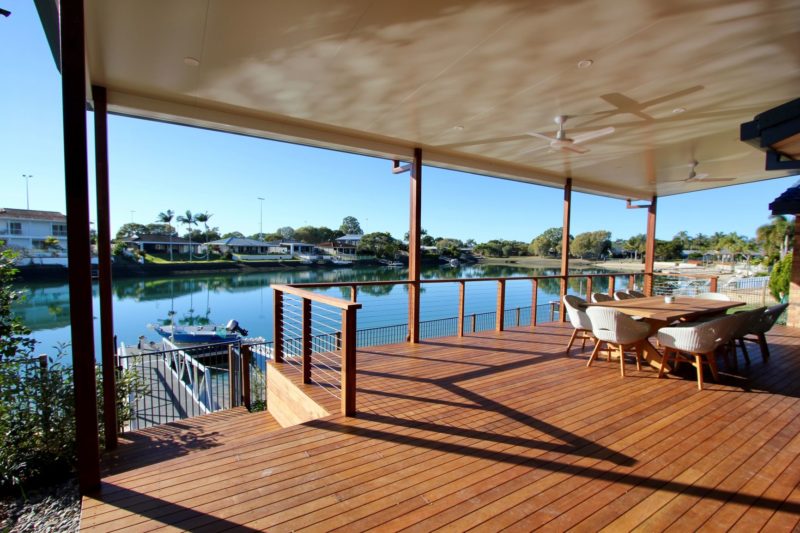
It is advisable to test the cover oil stain in inconspicuous areas before applying the first coat of paint to ensure that it does not change the colour of the wood. The instructions on the tin tell you to apply the oil stain and it takes longer to apply the second coat.
You must oil and dye your wooden deck from time to time to make sure it retains its shiny appearance, and we took the time to give you instructions on how to apply merbau decking oil. We’ll show you how to properly oil new decks in this article so you can get your deck repaired right away. If you are not sure how to use ceiling oil or stains, your wood supplier or hardware specialist can recommend it.

When installing a new wood floorboard in your home, many manufacturers recommend weathering it for 5-6 weeks before oiling it for a new coating treatment. This is because the weathering of your deck is full of tannin oil, which can leach from the sun and rain, ensuring that the wood surface is ready for oil ingress and better adhesion treatment. Check with your timber supplier before beginning to oil your new deck to see if the wood needs to be weathered for at least 4 to 6 weeks before coating.
External wood surfaces such as covering floors, wooden paths and top railings must be reapplied every 1-3 years based on the brand and type of solid stain. When used again, pay attention to signs of wear, fade, peel and access. In order to make the deck beautiful and extend the life of wood, the decks should be stained every two or three years.
Once your wooden deck is oiled, you should regularly grease and seal it every six to twelve months to ensure the deck’s longevity and make it look great all year round. You should also clean your deck every 3 months to remove dirt, dirt, scratches and any damage to the oil coating as you walk around the deck. During this maintenance period, check if the weather is improving on the surface before applying another layer of oil.
If you want your deck to look good and enjoy the peace and quiet that the stain lasts, call Five Star Color. Proper cleaning, preparation and application procedures ensure smooth finishing and ensure that the stain lasts so that you do not have to recolour the deck each year. If you decide to oil a deck stain, make sure that the deck is thoroughly cleaned before take-off.
Coloring and maintenance can be done in just a few days, but a colored deck requires proper cleaning and preparation prior to the application process to ensure a smooth finish. A new deck should be dry for at least 30 days before stains and paint can be applied.
The type of stain you use, and other factors determine how long it will take you to color your deck. Your deck needs to be stained every year or twice a year depending on the type of wood, stain, the environment in which you live and the best protection you can offer to your deck against high quality stain.
There are no strict and fast rules on how often you should stain your deck. High quality wooden deck stains can last on a deck for up to 3 years and on the horizontal surface up to 5 years but do not last forever. This article aims to give you some tips on how to apply your opaque stain back to different surfaces and different types of stain coatings.
You need to know what oils to use on your deck, when to clean it with a floor cleaner, when to dry and when to coat every section of the deck or board that is exposed to the weather. The weather of your deck is important, as it can leach tannins from the oils that are used due to sunlight and rain.
Over time, the wood turns gray, indicating that the deck is weathered. Oiling the wood is recommended in the midst of a heat wave to prevent the wood from drying out, which can lead to cupping, cracking and checking the floorboards and boards.
Cover oil provides great protection against mould and fungi because of its deep penetration into the wood and efficacy in sealing water. Unlike other products such as deck stains, deck and paint, which can help to preserve your new or old deck, deck oils are excellent for maintaining the natural grain and visibility and protecting the wood from sun damage.
Terrace oil is not intended to change the color of the wood, but is a water-based oil that darkens the wood. Ceiling oil protects the wood from the harsh effects of sunlight.
Solid stains are highly pigmented and available in a variety of colors to cover the natural wood grain on your deck. Solid and opaque wood stains look like paint, because they cover the wood so completely that the wood grain cannot be seen. Transparent wood stain looks natural because it contains minimal pigments.



